the FP7 features many roadname-specific details. The model is available with a SoundTraxx Tsunami Digital Command Control (DCC) sound decoder that works on DC and DCC layouts.
Prototype. From 1949 to 1953, General Motors Electro-Motive Division built a total of 372 FP7 diesel-electric locomotives. Designed as a dual-service (freight or passenger) locomotive, the FP7 was essentially a lengthened 1,500-hp F7A freight locomotive. The extra four feet of space on the FP7 held water tanks for the locomotive’s steam generator that supplied heat to passenger cars.
Early production FP7 diesels had horizontal slit side grills over the side air intakes. Starting in 1951, EMD produced FP7s with vertical slit Farr grills. About that time EMD also switched from 36″- to 48″-diameter rooftop dynamic brake fans. Railroads could order the FP7 with or without dynamic brakes.
Although no FP7B units were ever built, FP7s were run with F7B units on some roads. Some of these diesels still lead excursion trains.
All the dimensions of the Athearn Genesis model match prototype drawings in the Model Railroader Cyclopedia: Vol.2 Diesel Locomotives (Kalmbach Publishing Co., out of print).
Placement of side louvers and other molded detail match prototype photos. The model has many separately applied details including all grab irons and scale-profile m.u. hoses made of flexible acetal plastic. The air horn is also separately applied and placed correctly for the Reading prototype.
The horizontal-slit grills are see-through and made of etched metal. The grills don’t fit flush against the car body, giving them an unprototypical wavy appearance. I used a drop of cyanoacrylate adhesive (CA) to reattach a loose corner of the grill on the engineer’s side.
The paint scheme on the model matches photos of the Reading prototypes during the 1950s. I especially like the separate “905” number plate on the nose.
Mechanism. After removing both couplers and two additional screws on the rear of the chassis, I lifted off the body shell. The motor and flywheels are in a recess in the die-cast metal chassis between the trucks. Two driveshafts and worms transfer power from the motor to the truck-mounted gearboxes.
The DCC decoder is mounted on top of the motor. The speaker rests on top of the frame.
The rate of the engine revolution sounds increases or decreases with the locomotive speed, and when you sharply decrease the throttle you’ll hear squealing brakes. Other sound effects include a grade-crossing horn signal triggered by a sudden increase of the throttle. The bell turns on when the locomotive moves under 5 scale mph.
Many of the model’s features in DC mode, such as the automatic bell and grade crossing signal, which can be turned off, or starting voltage are controlled by configuration variables (CVs). However, you’ll need a DCC system to program CVs. For example, I improved the model’s slow speed performance in DC by using our Model Rectifier Corp. Prodigy Advance DCC system to set the analog starting voltage (CV 63) to a value of 30.
The Tsunami decoder has nine user-triggered functions, including long and short horn blasts and coupler crash sounds. A pamphlet outlines the basic sound functions. More extensive user and technical manuals are available as free downloads on the Athearn Web site.
Most of the model’s sound and lighting effects are programmable in DCC. You can also fine-tune its motor control and braking characteristics, including customizing the model’s speed table.
Based on prototype recordings, the sounds of the Athearn FP7, especially the 567B diesel engine and horn, are very realistic in both DC and DCC modes.
Despite the wavy side grills on our sample locomotive, the highly detailed Athearn FP7 is a good-looking model of its prototype. The SoundTraxx Tsunami sound decoder really brings the model to life on both DC and DCC layouts.
Price: $169.98 (A unit, DC, no sound), $259.98 (A unit, DCC, sound), $209.98, $309.98 (FP7A-F7B set, DC, no sound), $459.98 (FP7A-F7B set, DCC, sound)
Manufacturer
Athearn Trains
2883 E. Spring St., Suite 100
Long Beach, CA 90806
www.athearn.com
Road names: Reading, Pennsylvania, St. Louis Southwestern (Cotton Belt and SSW versions), and Western Pacific. See the Athearn Web site for available configurations.
Era: 1949 to present day
Features
All-wheel drive and electrical pickup
Dual-mode sound decoder (DCC versions only)
Five-pole skew-wound motor with dual brass flywheels
Magnetic knuckle couplers at correct height
Metal RP-25 contour wheels in gauge
Minimum radius: 18″
Weight: 1 pound 21/2 ounces





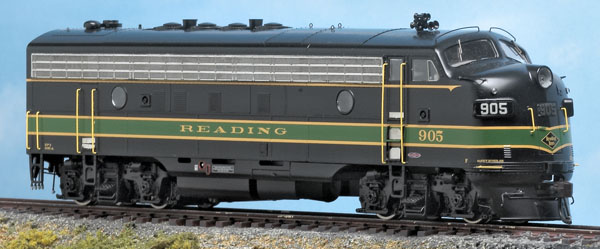
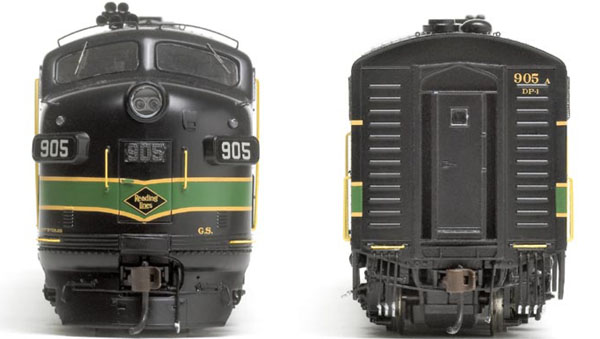
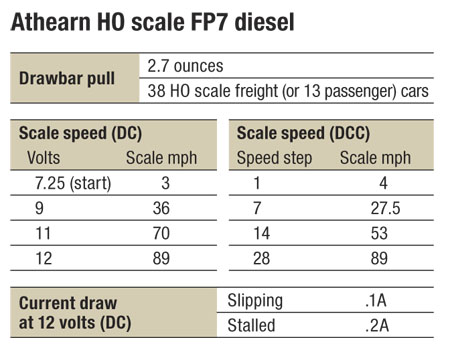
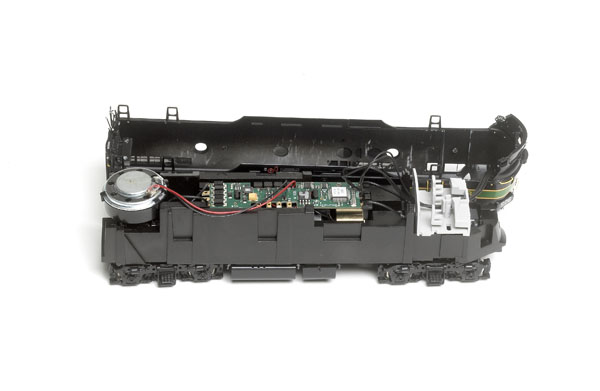


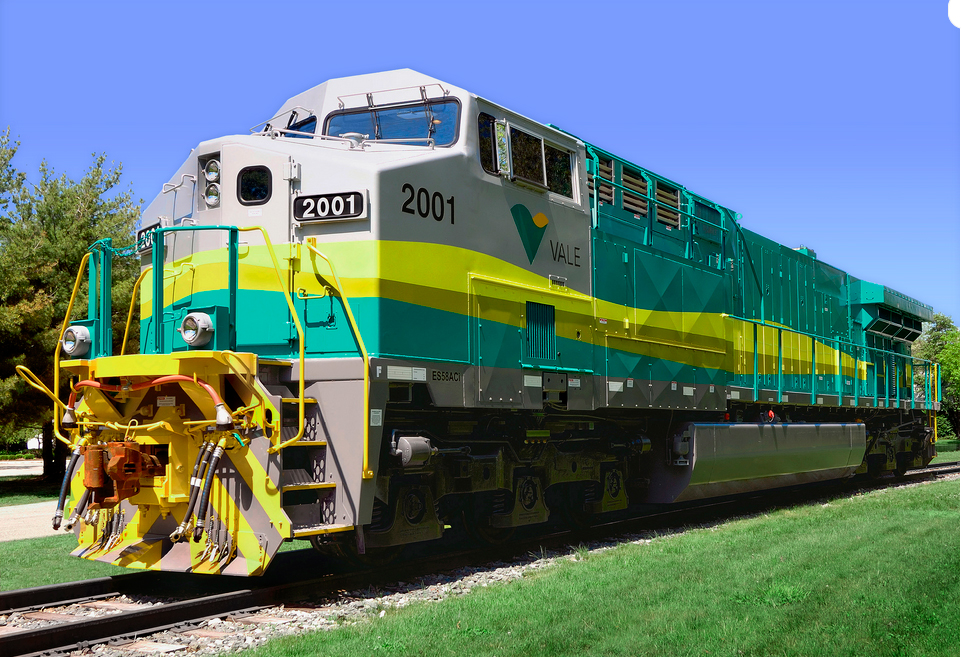
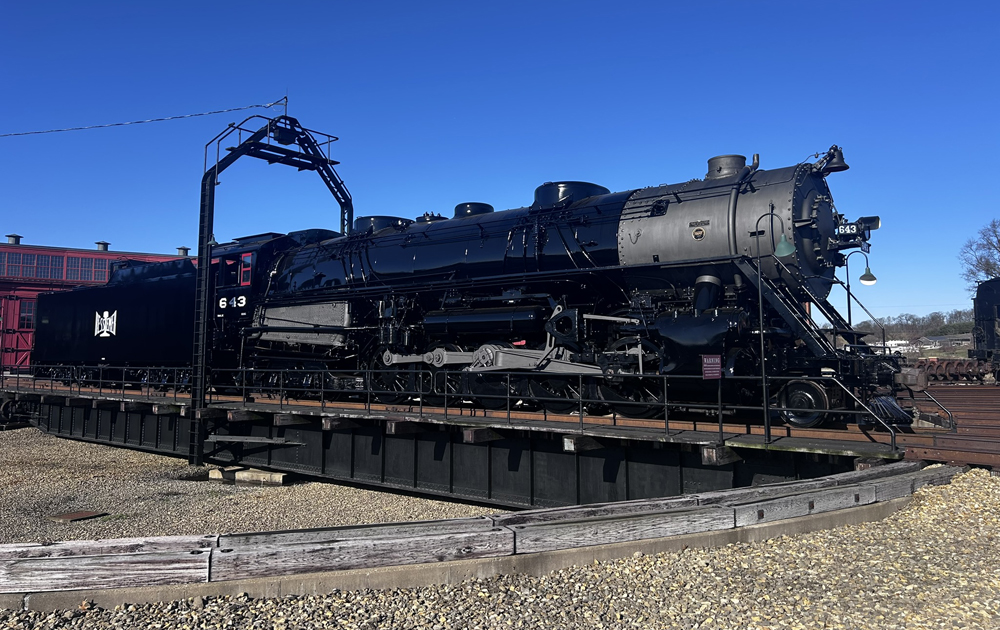





I have one of the older FP models – today everything is too high priced for children to play with the trains.
VERY NICE AND ENJOYABLE.
I think the sound of the 567 is excellent! It has the "whine" of the engine…and even a little bass tone. Tsunami is a great deal. The bell is good too…the only thing I would have preferred is the Nathan M-5 to sound like an M-5. I have a TSU-AT1000 that DOES have it, so I know its availible.
Very nice model.
Excellent!!!!!!!!!!! I'm drooling over here. I love all the video reviews.
I have one, A and B units, they are great!!!
Very nice model! Like all DCC & sound equiped engines, they are pretty pricy but they are made with good quality materials and engineered to run smooth. I have not seen Athearn's brand new F units but I would like to see "Acetal" hand rails replaced with metal for easier handling and the lighting including the "Mars" lights where applicable, could be brighter with more realistic pulsing (Mars) simulation. I love the Athearn details, finish & interior as viewed through the windsheild coming down the tracks. The addition of a defeatable interior light would be nice to show of this feature at night. 'Gotta love 'em!
i WOULD LOVE TO OWN A PAIR
the front trucks turning ability is hindered by the small step
added to the apron or "cow catcher" on the front of the
engine. It would cause the front trucks to jump the tracks
when negotiating curves as wide as 24". I solved the problem
by reducing the size of the step so the front truck could turn
fully.
outstanding
wht happened to the originalset up too much tec
Good looking model, but not for me only because it's a road I don't model. If it were Rock Island, it would be a different story!
Hey! where did Athearn picked up a FP7?
I knew Highliner products (thanks Paul) was used for their F units, but the FP-7 came out of nowhere.